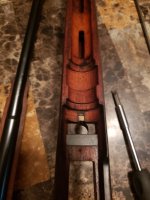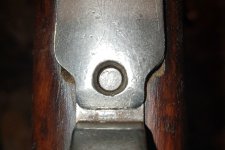You are right to be careful w/the handguard. The spring is pretty strong, held to hg by 2 screws, in not much thickness of 110 year old walnut. I’m always afraid of scratches on the barrel from the cut edges of the spring. Since you have the action out of the stock, you “should be” able to remove it w/out damage, if you so choose. (easier that way) 1st, remove the screw at the front of the rear sight as it sometimes overhangs the edge of the hg. Next, either remove the rear sight leaf (I do) or stand it straight up, because the cursor ‘wings’ at the rear overhang the slot in the guard. Then starting at the front & using both hands, lift evenly at the edges, working towards the rear. It’ll suddenly pop off, and then you can rotate the hg 90 degrees to clear the standing rear sight, clean & oil under the guard. I think this handguard isn’t original to the stock, because it is slightly wider than the stock, & wouldn’t have been shipped that way.
I think the hole in this stock was enlarged for a .30-06 magazine, why it doesn’t fit correctly. The contract for the M1909 was run at DWM in the years 1910-12, before the outbreak of ‘The Great War’ when ‘old world craftsmanship’ really meant something, not just a sales pitch. I have 3 1909s & the workmanship is very good, almost unbelievable for a time without cnc machines, but still a mass production situation. In your pics, one can see how closely & well finished the inside of the stock is, how closely it fits all the metal EXCEPT the ‘cartridge box’. The original 1909 contract was for ~120k-200k rifles and 3-5 spare barrels PER RIFLE, + a ton of other spare parts. The Argies rebuilt their rifles repeatedly until after WW2, when the US gave them a ton of surplus .30-06 ammo, then they rebarreled some for that caliber, & changed/modified the t guard/cartridge box to fit the longer rounds. Prior to 1950, Argentina didn’t manufacture their own M1909s, but afterwards, they did (6 digit serial, no letter prefix, different national crest, still 8mm). The M1909 trigger guard had a hinged floor plate, but was exactly the same profile as the standard detachable floor plate M98, so that’s not why this stock was ‘buggered’. I‘m curious about the piece of metal in the stock channel in front of the forward action screw hole. The original recoil lug sits behind the hole, this is in front of it. Nut for cleaning rod? The receiver is definitely a Mauser Oberndorf, as seen by the ‘RW/WR’ mark on the bottom.
Sorry for the long story, as you may suspect, I enjoy ‘forensic mechanics’ , the process of looking at old rifles & learning their history from such evidence as we can see. If this were my rifle, I might not shoot it in this stock, as the relief at the t guard has likely compromised the fit to the stock, & it might split with much firing. I see signs that this rifle is a rescue/put together. (still interesting)


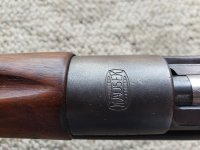



 20220416_161624.jpg514.1 KB · Views: 34
20220416_161624.jpg514.1 KB · Views: 34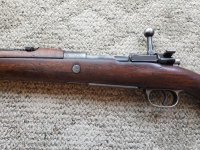 20220416_161628.jpg498.8 KB · Views: 35
20220416_161628.jpg498.8 KB · Views: 35 20220416_161642.jpg441.1 KB · Views: 34
20220416_161642.jpg441.1 KB · Views: 34 20220416_161647.jpg499.4 KB · Views: 32
20220416_161647.jpg499.4 KB · Views: 32 20220416_161651.jpg511.7 KB · Views: 33
20220416_161651.jpg511.7 KB · Views: 33 20220416_161653.jpg589.4 KB · Views: 38
20220416_161653.jpg589.4 KB · Views: 38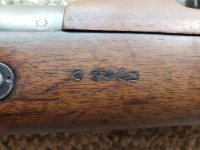 20220416_161658.jpg333.1 KB · Views: 39
20220416_161658.jpg333.1 KB · Views: 39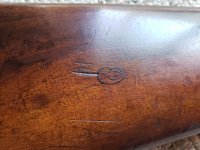 20220416_161705.jpg387.8 KB · Views: 39
20220416_161705.jpg387.8 KB · Views: 39 20220416_161729.jpg275.1 KB · Views: 39
20220416_161729.jpg275.1 KB · Views: 39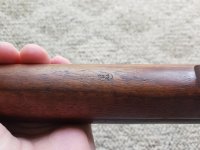 20220416_161749.jpg224.3 KB · Views: 38
20220416_161749.jpg224.3 KB · Views: 38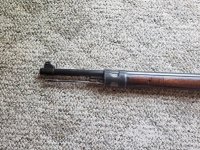 20220416_161633.jpg571.5 KB · Views: 35
20220416_161633.jpg571.5 KB · Views: 35


